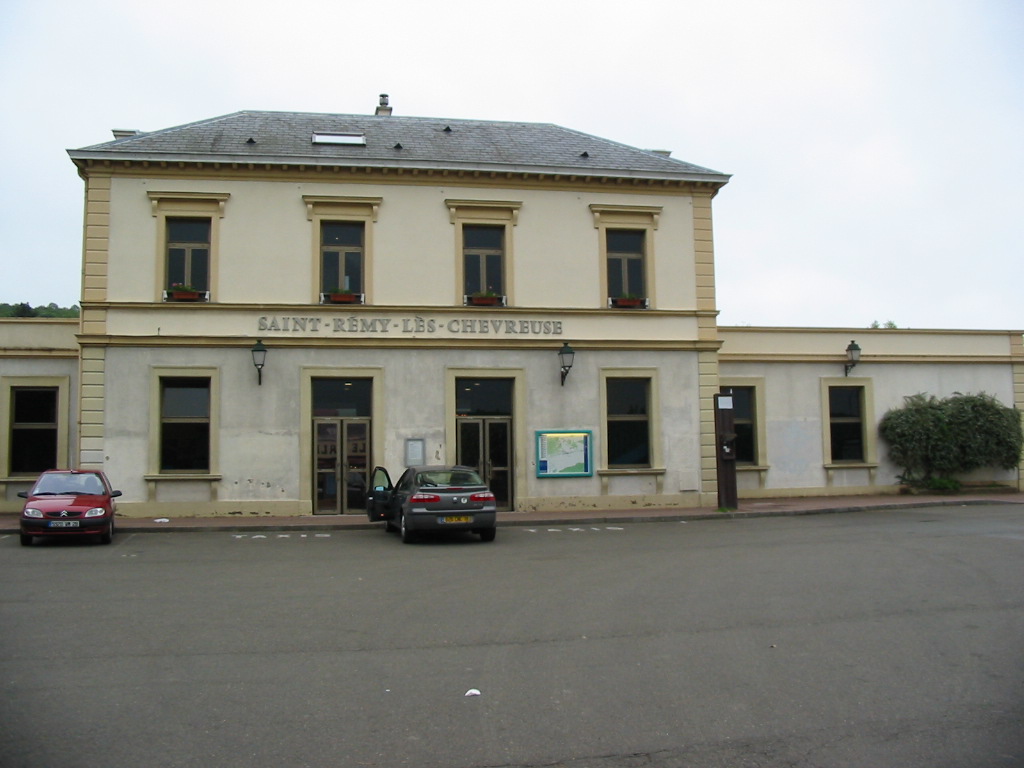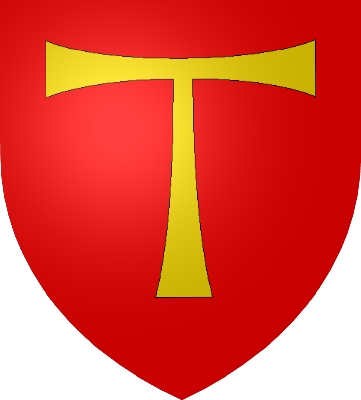|
Asnières-lès-Dijon
Asnières-lès-Dijon (, literally ''Asnières near Dijon'') is a commune in the Côte-d'Or department in the Bourgogne-Franche-Comté region of eastern France. The inhabitants of the commune are known as ''Asniérois'' or ''Asniéroises''. Geography Asnières-lès-Dijon is located just 8 km north of Dijon. The commune lies between the D903 road which follows its western border from Dijon to Savigny-le-Sec and the D974 which follows the eastern border from Dijon and continues to Til-Châtel. The D104 links the two roads through the village and also continues east to Bellefond. The commune is mixed forest and farmland with a substantial urban area covering some 20% of the commune. Neighbouring communes and villages History After the defeat of France in 1870-1871, Dijon was chosen with Langres, Besançon, Reims, Laon, and La Fère to be a "second line" of the Séré de Rivières system of defence (the first line being focused on Verdun, Toul, Epinal, and Belfort). A seri ... [...More Info...] [...Related Items...] OR: [Wikipedia] [Google] [Baidu] |
Lès
The word ''lès'' (, and with liaison) is an archaic French preposition meaning "near", "next to". Today it occurs only in place names to distinguish places of the same name. The word ''lès'' has two variants: ''lez'' and ''les''. The latter should not be confused with the plural definite article ''les'' (e.g. ''les-Bains'', "the Baths"). Etymology The word ''lès'' and its variants derive from late Latin ''latus'', "side". Examples Lès * Villeneuve-lès-Avignon, near Avignon * Beaumont-lès-Valence, near Valence * Saint-Rémy-lès-Chevreuse, near Chevreuse * Margny-lès-Compiègne, near Compiègne * Asnières-lès-Dijon, near Dijon * Fontaine-lès-Dijon, near Dijon * Hauteville-lès-Dijon, near Dijon * Neuilly-lès-Dijon, near Dijon * Perrigny-lès-Dijon, near Dijon * Plombières-lès-Dijon, near Dijon * Sennecey-lès-Dijon, near Dijon * Garges-lès-Gonesse, near Gonesse * Bonchamp-lès-Laval, near Laval * Fontaine-lès-Luxeuil, near Luxeuil-les-Bains * ... [...More Info...] [...Related Items...] OR: [Wikipedia] [Google] [Baidu] |
Communes Of France
The () is a level of administrative divisions, administrative division in the France, French Republic. French are analogous to civil townships and incorporated municipality, municipalities in the United States and Canada, ' in Germany, ' in Italy, or ' in Spain. The United Kingdom's equivalent are civil parishes, although some areas, particularly urban areas, are unparished. are based on historical geographic communities or villages and are vested with significant powers to manage the populations and land of the geographic area covered. The are the fourth-level administrative divisions of France. vary widely in size and area, from large sprawling cities with millions of inhabitants like Paris, to small hamlet (place), hamlets with only a handful of inhabitants. typically are based on pre-existing villages and facilitate local governance. All have names, but not all named geographic areas or groups of people residing together are ( or ), the difference residing in the l ... [...More Info...] [...Related Items...] OR: [Wikipedia] [Google] [Baidu] |
Reims
Reims ( , , ; also spelled Rheims in English) is the most populous city in the French department of Marne, and the 12th most populous city in France. The city lies northeast of Paris on the Vesle river, a tributary of the Aisne. Founded by the Gauls, Reims became a major city in the Roman Empire. Reims later played a prominent ceremonial role in French monarchical history as the traditional site of the coronation of the kings of France. The royal anointing was performed at the Cathedral of Reims, which housed the Holy Ampulla of chrism allegedly brought by a white dove at the baptism of Frankish king Clovis I in 496. For this reason, Reims is often referred to in French as ("the Coronation City"). Reims is recognized for the diversity of its heritage, ranging from Romanesque to Art-déco. Reims Cathedral, the adjacent Palace of Tau, and the Abbey of Saint-Remi were listed together as a UNESCO World Heritage Site in 1991 because of their outstanding Romanesque ... [...More Info...] [...Related Items...] OR: [Wikipedia] [Google] [Baidu] |
CEA Valduc
{{coord, 47.582160, 4.870442, format=dms, display=title CEA/Valduc or the Valduc Centre for Nuclear Studies is a French nuclear facility ( CEA, direction of military applications) dedicated to the study, manufacturing, maintenance and dismantling of nuclear weapons. The site was acquired in 1957 by the CEA and the centre built in 1958. It has an area of 6.7 km² (now 7.5 km²), while the actual site occupies 1.8 km². Seventeen basic nuclear installations are on the site, comprising a total of 25,000 m² of floor space. The centre is surrounded by a zone where photography and cartography are prohibited but through traffic is permitted on roads. There are about 1,000 CEA employees working in the centre, as well as about 300 employees from contractors. It seems that most employees commute from Is-sur-Tille and Dijon; the CEA charters buses bringing employees from various locations in the Dijon agglomeration. Since a restructuring decision of the CEA in 1996, V ... [...More Info...] [...Related Items...] OR: [Wikipedia] [Google] [Baidu] |
Commissariat à L'énergie Atomique Et Aux énergies Alternatives
The French Alternative Energies and Atomic Energy Commission or CEA (French: Commissariat à l'énergie atomique et aux énergies alternatives), is a French public government-funded research organisation in the areas of energy, defense and security, information technologies and health technologies. The CEA maintains a cross-disciplinary culture of engineers and researchers, building on the synergies between fundamental and technological research. CEA is headed by a board headed by the general administrator (currently François Jacq since 20 April 2018), advised by the high-commissioner for atomic energy (currently Patrick Landais). Its yearly budget amounts to €5.1 billion and its permanent staff is slightly over 20,500 persons. It owned Areva. CEA was created in 1945; since then, the successive high-commissioners have been Frédéric Joliot-Curie, Francis Perrin, Jacques Yvon, Jean Teillac, Raoul Dautry, René Pellat, Bernard Bigot, Daniel Verwaerde and François Jacq. ... [...More Info...] [...Related Items...] OR: [Wikipedia] [Google] [Baidu] |
Second World War
World War II or the Second World War, often abbreviated as WWII or WW2, was a world war that lasted from 1939 to 1945. It involved the vast majority of the world's countries—including all of the great powers—forming two opposing military alliances: the Allies and the Axis powers. World War II was a total war that directly involved more than 100 million personnel from more than 30 countries. The major participants in the war threw their entire economic, industrial, and scientific capabilities behind the war effort, blurring the distinction between civilian and military resources. Aircraft played a major role in the conflict, enabling the strategic bombing of population centres and deploying the only two nuclear weapons ever used in war. World War II was by far the deadliest conflict in human history; it resulted in 70 to 85 million fatalities, mostly among civilians. Tens of millions died due to genocides (including the Holocaust), starvat ... [...More Info...] [...Related Items...] OR: [Wikipedia] [Google] [Baidu] |
Prussia
Prussia, , Old Prussian: ''Prūsa'' or ''Prūsija'' was a German state on the southeast coast of the Baltic Sea. It formed the German Empire under Prussian rule when it united the German states in 1871. It was ''de facto'' dissolved by an emergency decree transferring powers of the Prussian government to German Chancellor Franz von Papen in 1932 and ''de jure'' by an Allied decree in 1947. For centuries, the House of Hohenzollern ruled Prussia, expanding its size with the Prussian Army. Prussia, with its capital at Königsberg and then, when it became the Kingdom of Prussia in 1701, Berlin, decisively shaped the history of Germany. In 1871, Prussian Minister-President Otto von Bismarck united most German principalities into the German Empire under his leadership, although this was considered to be a " Lesser Germany" because Austria and Switzerland were not included. In November 1918, the monarchies were abolished and the nobility lost its political power during ... [...More Info...] [...Related Items...] OR: [Wikipedia] [Google] [Baidu] |
Sennecey-lès-Dijon
Sennecey-lès-Dijon (, literally ''Sennecey near Dijon'') is a commune in the Côte-d'Or department in eastern France. Population See also *Communes of the Côte-d'Or department The following is a list of the 698 communes of the Côte-d'Or department of France. The communes cooperate in the following intercommunalities (as of 2020):Communes of Côte-d'Or {{CôteOr-geo-stub ... [...More Info...] [...Related Items...] OR: [Wikipedia] [Google] [Baidu] |
Saint-Apollinaire, Côte-d'Or
Saint-Apollinaire () is a commune in the Côte-d'Or department in eastern France. Population Sport Saint-Apollinaire is home to a small concentration of some of the best sporting facilities in the Greater Dijon area. The sports complex to the south-east of the town is of major importance on the scale of Greater Dijon. The town is represented in rugby union by ASC Saint Apollinaire-Talant RC, currently in Fédérale 3; the fifth tier of French rugby. See also *Communes of the Côte-d'Or department The following is a list of the 698 communes of the Côte-d'Or department of France. The communes cooperate in the following intercommunalities (as of 2020):Communes of Côte-d'Or {{CôteOr-geo-stub ... [...More Info...] [...Related Items...] OR: [Wikipedia] [Google] [Baidu] |
Belfort
Belfort (; archaic german: Beffert/Beffort) is a city in the Bourgogne-Franche-Comté region in Northeastern France, situated between Lyon and Strasbourg, approximately from the France–Switzerland border. It is the prefecture of the Territoire de Belfort department. Belfort is from Paris, from Strasbourg, from Lyon and from Zürich. The residents of the city are called "Belfortains". The city is located on the river Savoureuse, on a strategically important natural route between the Rhine and the Rhône – the Belfort Gap (''Trouée de Belfort'') or Burgundian Gate (''Porte de Bourgogne''). It is located approximately south from the base of the Ballon d'Alsace mountain range, source of the Savoureuse. The city of Belfort has 46,443 inhabitants (2019).Téléc ... [...More Info...] [...Related Items...] OR: [Wikipedia] [Google] [Baidu] |
Toul
Toul () is a commune in the Meurthe-et-Moselle department in north-eastern France. It is a sub-prefecture of the department. Geography Toul is between Commercy and Nancy, and the river Moselle and Canal de la Marne au Rhin. Climate Toul has a oceanic climate (Köppen climate classification ''Cfb''). The average annual temperature in Toul is . The average annual rainfall is with June as the wettest month. The temperatures are highest on average in July, at around , and lowest in January, at around . The highest temperature ever recorded in Toul was on 11 August 1998; the coldest temperature ever recorded was on 9 January 1985. History Toul was known to the Romans as , and was the capital of the Gaulish tribe of the Leuci. In 550, King Theudebald convoked a synod at Toul. In 612, King Theudebert II of Austrasia was defeated by King Theuderic II of Burgundy near Toul. By the Treaty of Meerssen of 870, Toul became part of East Francia, the later Holy Roman Empire ... [...More Info...] [...Related Items...] OR: [Wikipedia] [Google] [Baidu] |




